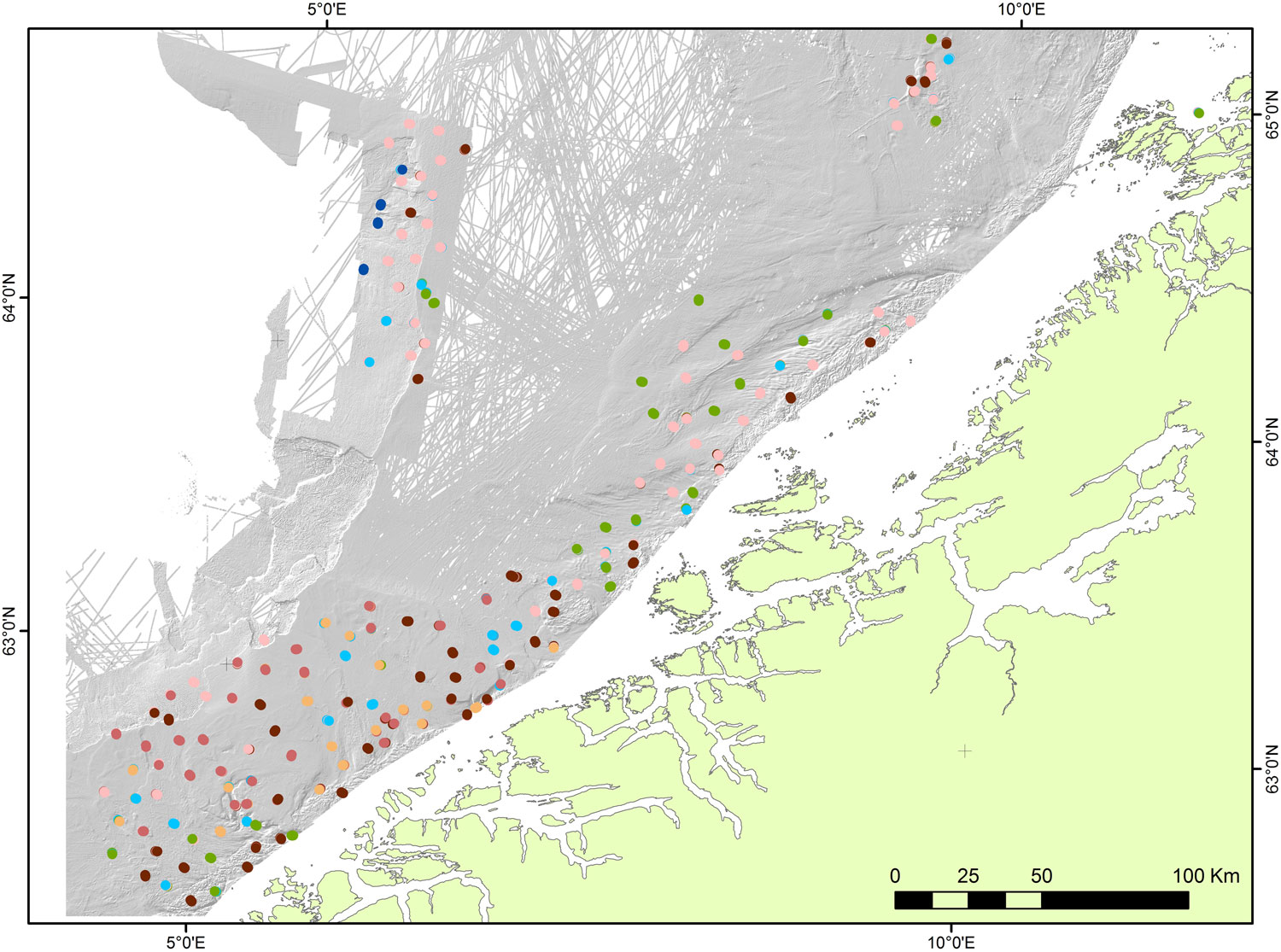
See map
Biotopes - mid-Norwegian shelf
Contact
Margaret Dolan
+47 73 90 42 67
Pål Buhl-Mortensen
+47 55 23 68 15
+47 974 64 151

Published: 09.12.2013 Updated: 02.11.2022
The biotopes occurring in those areas of the Norwegian Sea that were investigated by MAREANO in 2012 have been identified through detailed analysis of seabed video data over the past year and the spatial distribution of these biotopes has now been modelled to produce a full coverage biotope map as shown in Figure 1 below.

| Biotope | Average depth (m) | Depth range (m) | Dominant sediment from video observations. | Landscape and terrain | Characteristic fauna | General description of fauna |
|---|---|---|---|---|---|---|
 Biotope 7 |
145 | 59-350 | Sand, gravel and stones. | Continental shelf plains (banks). | Gadus morhua, Phakellia sp., Psolus squamatus, Zoanthidea indet | Hard bottom dwelling fauna. |
 Biotop 6 |
168 | 90-217 | Sandy mud, sand and gravel. | Continental shelf plains and shallow parts of marine valleys. | Ditrupa arietina, Luidia sp., Molva molva, Trisopterus sp. | Mixed bottom dwelling fauna. |
 Biotop 1 |
151 | 38-516 | Gravel, stones and bedrock. | Varied topography including rugged bedrock. | Antho dichotoma, Axinella infundibuliformis, Phakellia sp., Porifera skorpe, Stylasteridae | Hard bottom sponge communities (dominated by leaf-shaped sponges). |
 Biotop 2 |
258 | 121-670 | Mud, sandy mud, sand | Marine valleys. | Flabellum macandrewi, Pachycerianthus multiplicatus | Sandy Hexacoral bottom. |
 Biotop 4 |
293 | 181-456 | Mud, sandy mud, sand | Shallow and wide marine valleys. | Funiculina quadrangularis, Kophobelemnon stelliferum, Stylocordyla borealis, Thenea abyssorum, Asteronyx loveni | Seapen meadows. |
 Biotop 3 |
308 | 109-670 | Muddy sand, sand, gravel, stony coral (Lophelia) | Ridges and slopes. | Primnoa resedaformis, Cidaris cidaris, Bonellidae, Plakortis, Paragorgia arborea | Stony and horny corals, urchins, echiuran worms, sponges. |
 Biotop 5 |
988 | 644-1463 | Sandy mud, gravel and compacted sediments. | Lower continental slope. | Gersemia rubiformis, Gorgonocephalus sp., Bythocaris sp., Cerianthus vogti, Drifa glomerata | Deep sea fauna. |
All the biotopes, with the exception of number 5 occur with the depth range of Atlantic water. Biotopes 7, 6 and 1 are closely linked to the different types of sediments occurring on the banks. Biotopes 2 and 4 typically occur in marine valleys which transect the continental shelf. Biotope 2 is characterised by coral reefs and coral forests on various bottom types, often with ridges of various geologic origin. Biotope 5 represents the deepest parts of the study area and is dominated by deep sea fauna in cold Norwegian Sea water.
Multibeam and Olex compiled bathymetry (www.olex.no), together with interpreted sediment and landscape maps have been used to provide environmental variables used for map prediction. The success of this ‘real life’ mapping using both Olex and multibeam data validates trials of this approach undertaken in Troms II/Nordland VI in 2011 which have recently been accepted for publication in the international scientific literature.
Biotope maps are an important part of the new information obtained through MAREANO mapping. The biotope maps provide a basis for the evaluation of vulnerability, species richness and uniqueness in a particular area of the seabed. This is important information when developing management plans and other advice related to the use of marine areas.
Further technical details on the biotope modelling area available here.